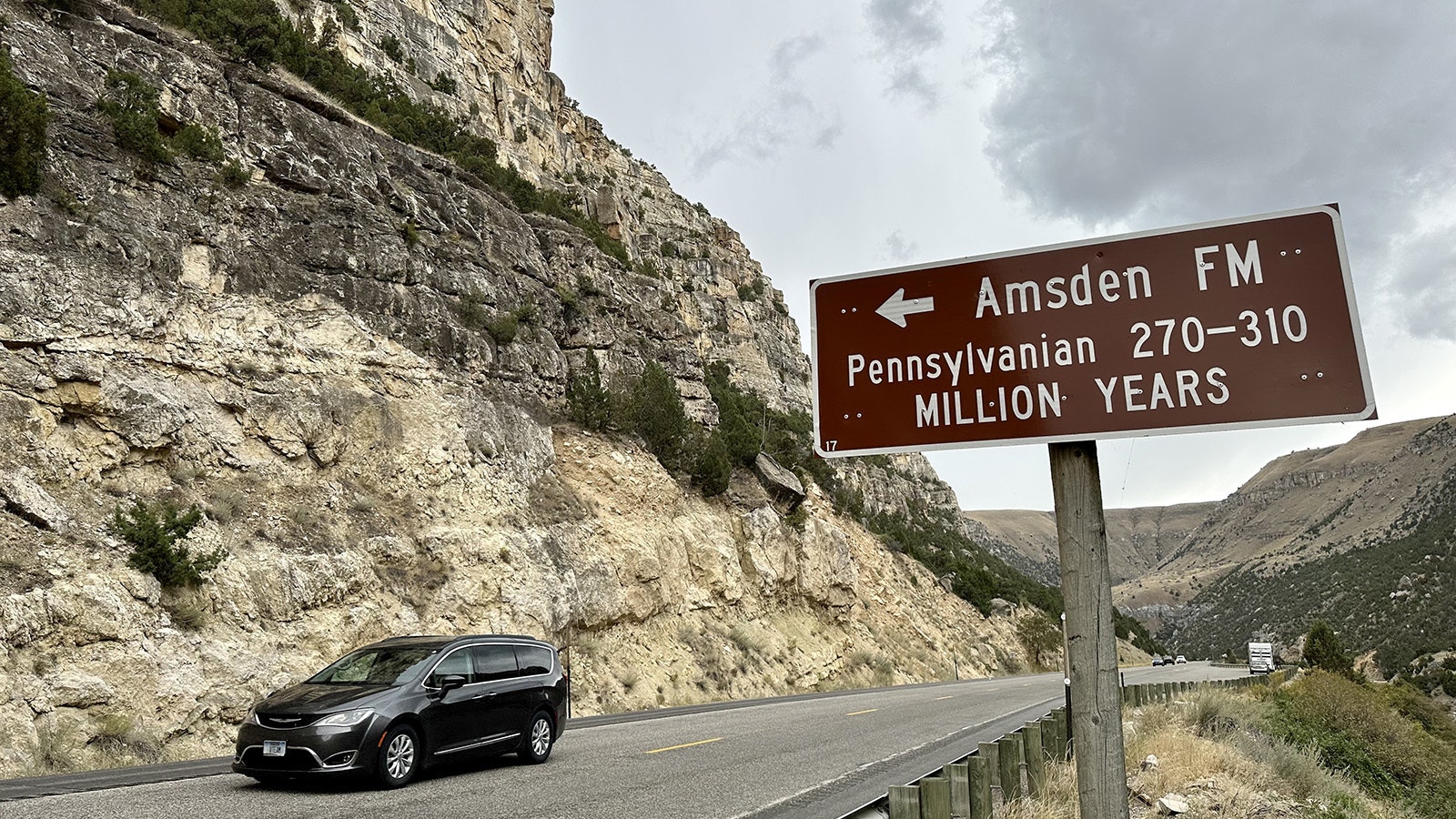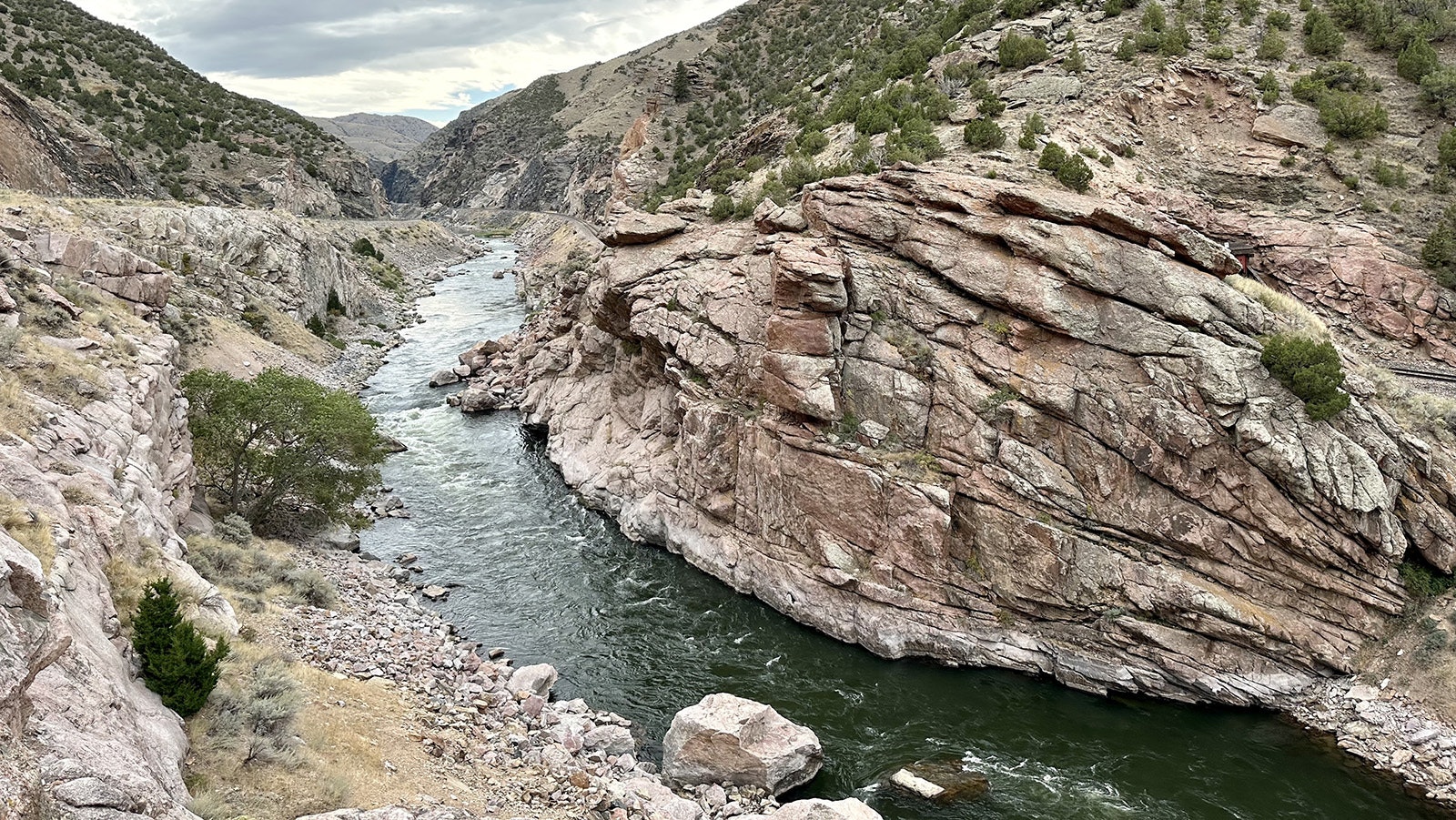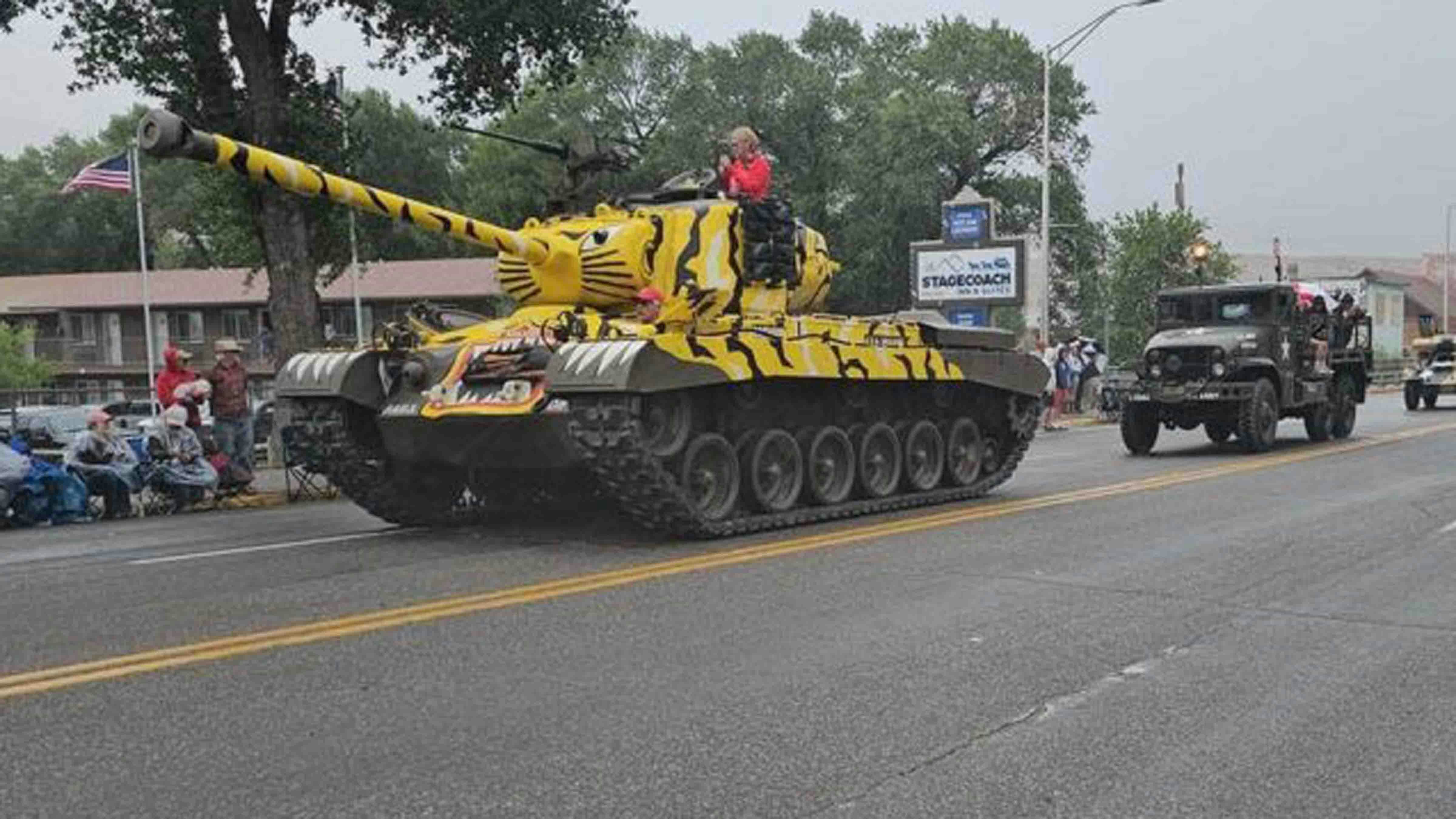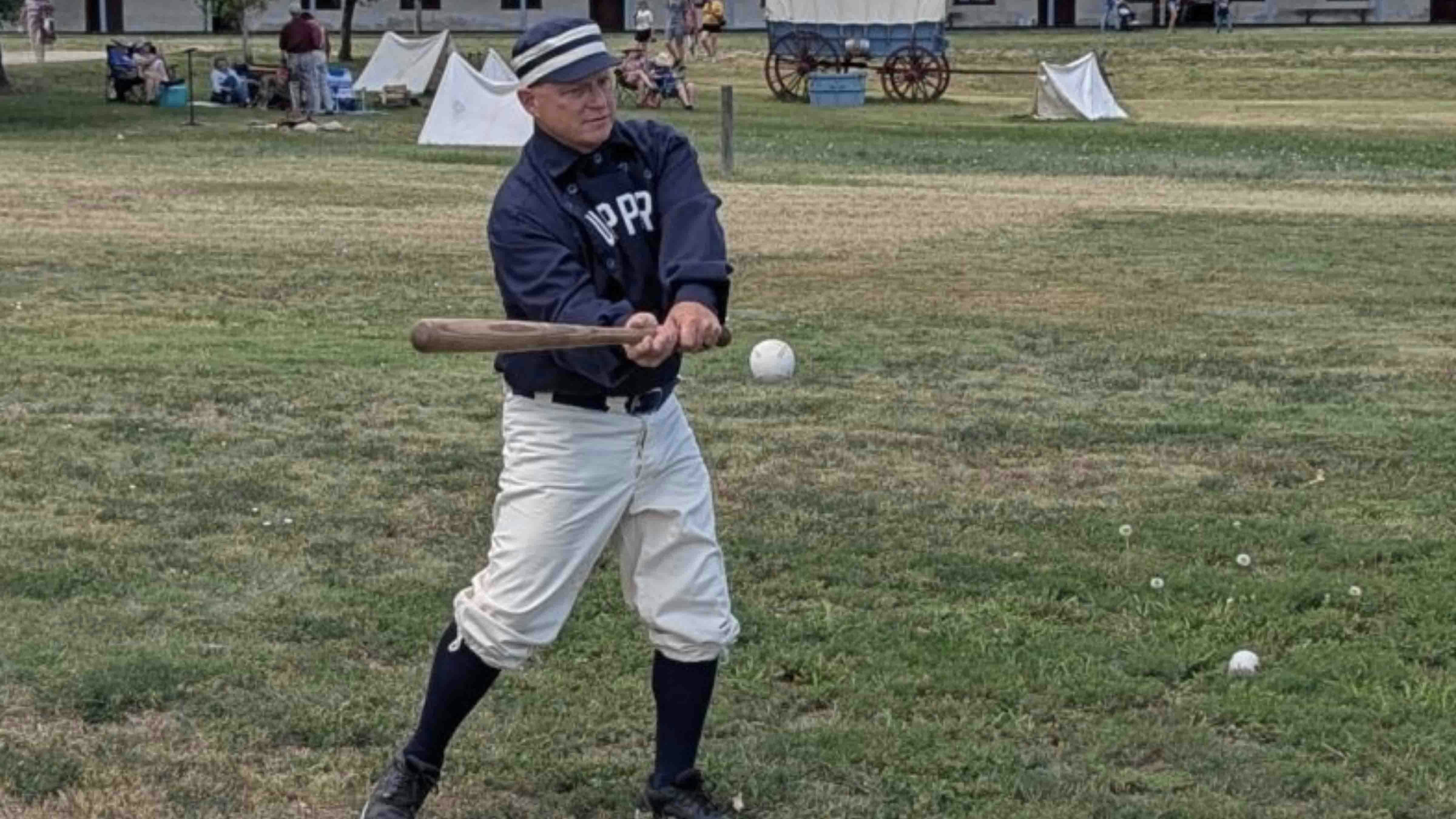The Wind River Canyon is one of the best drives in Wyoming with awe-inspiring views of the towering 2,500-foot-tall canyon walls only matched by the apprehension that a piece of those walls might come tumbling down at any time.
Nobody denies the canyon's beauty, even if they find the drive frightening or annoying because of the frequent rockfalls that can block traffic for days on end. Driving through Wind River Canyon takes a decent amount of time, even when traffic flow freely.
Time is one story the Wind River Canyon tells better than any other place in Wyoming, and possibly the entire United States. Its unique geology means that in the 20 minutes it takes people to drive its 17 miles, they’re taking a trip through more than 2 billion years of Earth’s history, and don’t need plutonium or a modified DeLorean to do it.
Two Billion Years In 20 Minutes
Paleontologist Angela Reddick has lived in Thermopolis for years but remembers her first drive through the Wind River Canyon.
“At the time, I didn’t even know it existed,” she told Cowboy State Daily. “A friend drove me through it and told me to have my camera ready. In that 20-minute drive, I took over 100 pictures because I was so impressed with it.”
Since then, Reddick has given dozens of tours taking people through the canyon to explain its geologic history. For a state known for its magnificent geology, the Wind River Canyon is in a category all its own.
“The Wind River Canyon is a massive snapshot of Wyoming’s history in a nutshell, going from some of the oldest rocks on the planet to the beginning of the Age of Dinosaurs. You’re literally traveling through 2 billion years in 20 minutes of driving,” she said.
The only similar place in the United States she can think of is the Grand Canyon in Arizona. While the Grand Canyon might offer a better overall view, the natural orientation of the Wind River Canyon functions as a literal journey through time, and a boat isn’t required to take the trip.
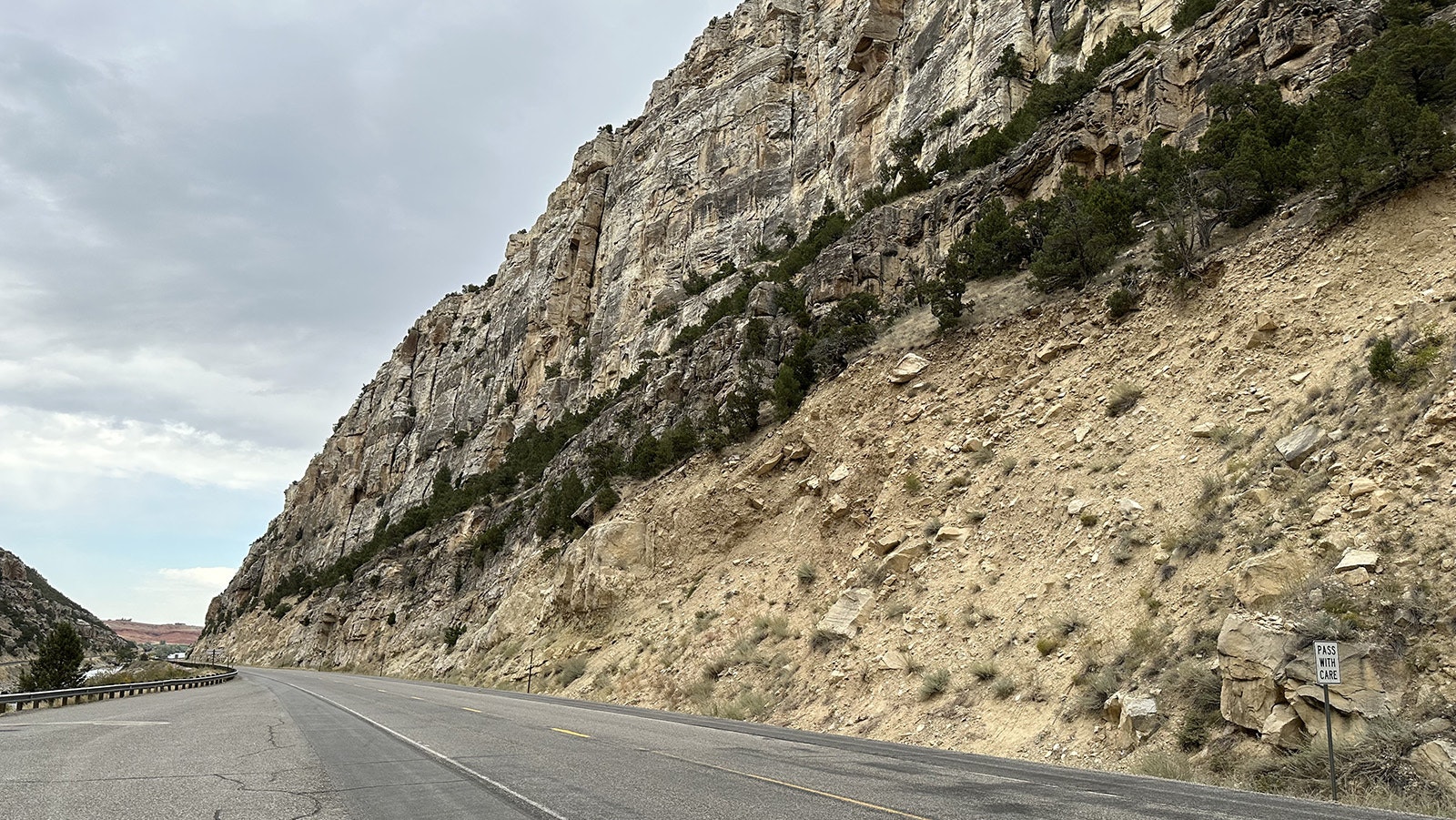
The Great Unconformity
The Wind River Canyon’s time travel trip starts dramatically at the southern end near its three caves blasted into the rock. In a few seconds, travelers make a time jump of almost 2 billion years.
The walls of black and pink granite are from the Precambrian Period, an age of magma and volcanic intrusions more than 2.5 billion years ago. These aren’t only the oldest rocks in the canyon, but some of the oldest on the planet.
Meanwhile, the rock sitting on top of the granite is flathead sandstone from the Cambrian Period laid down around 500 million years ago.
Two billion years of history are missing in the Wind River Canyon, and to this day nobody knows exactly where it went.
It’s called the Great Unconformity by geologists. Evidence of the enormous gap in Earth's geologic history can be seen in many other spots around the world, including the Grand Canyon. The Wind River Canyon might be the most accessible place where the stark contrast of the Great Unconformity can be seen and touched. There’s even a pull-off for photos.
It sounds unbelievable, but it's there.
“It’s difficult to contemplate 500 million years, let alone 2-and-a-half billion years," Reddick says. "Then there’s a 2 billion-year gap. It’s hard to comprehend, yet there’s strong evidence of it still there next to our lack of belief in it,” she said.
Layers Upon Layers
Thankfully, the rest of the Wind River Canyon doesn’t pose such profound questions about Earth’s history. And there are plenty of timestamps to guide time travelers during their journey.
Road signs along the highway highlight the most significant rock formations in the Wind River Canyon. It’s much easier to see the difference between the Gros Ventre Formation, the Gallatin Limestone and the Amsden Formation when a sign lets drivers know once they’ve reached it.
“The signs include the name and age of each formation,” she said. “There are more layers than there are signs, but the signs that are there are very good at pointing out the major formations of time.”
At least 12 rock layers are exposed in the canyon, but even trained geologists can have difficulty spotting them from the window of a vehicle traveling 65 mph on U.S. Highway 20. Thankfully, the “nametags” the U.S. Highway Administration added are enough to summarize a complex geological story.
People might remember some of the major periods of the Paleozoic Era from their Earth Sciences class in middle school: the Precambrian, Cambrian, Ordovician, Devonian, Mississippian, Pennsylvanian and Permian. The Wind River Canyon is an excellent teacher of that history, as at least one rock layer from each major period is exposed along its walls.
The most remarkable thing about the Wind River Canyon’s journey through time is that everything is laid out chronologically. The trip from Shoshoni to Thermopolis takes drivers forward in time, with each successive layer getting closer to today.
Conversely, a driver from Thermopolis to Shoshoni takes drivers back in time. No matter which way the drive is taken, the canyon is a geologically perfect succession through Earth’s history.
Reddick says she prefers doing the tours starting with the oldest layer, the 2.5 billion-year-old Precambrian rocks on the southern end, and moving north toward the comparatively younger Dinwoody Formation (roughly 220 million years old) at the canyon’s north end.
This isn’t the only place in Wyoming where these layers are exposed, as many are also visible and marked in the Ten Sleep Canyon on the eastern edge of the Bighorn Basin. In Reddick’s opinion, the difference is what kind of beauty people crave in their canyon trips.
“The rock layers in the Ten Sleep Canyon are harder to see, which in some people’s opinion makes the Ten Sleep Canyon prettier, and in others makes the Wind River Canyon prettier,” she said. “The difference is how you see and experience the geology.”
It’s Alive!
There’s also plenty of life in the Wind River Canyon, both on the road and in the rocks. Several formations exposed in the canyon have produced fossils from the prehistoric oceans that covered Wyoming at the time.
On the canyon’s southern end, the Phosphoria Formation contains fossils of tiny marine creatures that lived in the Early Permian Period around 280 million years ago. The rocks preserve fossils of the youngest trilobites, the famous pill bug-like invertebrates that were completely extinct by the end of that period.
Trilobites first appeared 520 million years ago and went extinct around 250 million years ago, a 270-million-year existence that is preserved in the rocks inside the Wind River Canyon. It makes that 20-minute drive a journey through the rise and fall of one of the most iconic and important species in Earth’s history.
Other formations in the canyon preserve traces of soft-bodied marine creatures. While their bodies disappeared hundreds of millions of years ago, their burrows and trackways from the prehistoric ocean floor are still visible in the rock.
Drivers are greeted by the blood-red rock of the Chugwater Formation at the northern end of the Wind River Canyon, a familiar sight for Wyomingites. But even as the canyon ends and opens up into the Bighorn Basin, the journey through time continues.
Visitors emerging from the northern end of the canyon arrive at the most famous geologic age in Earth’s history. The rocks on that horizon come from the Age of the Dinosaurs and beyond, and anyone can keep traveling forward or even go back in time without leaving their car or even turning around.
“As you keep going, you see the bright-red Triassic-age rock, into Jurassic and Cretaceous formations. Then, you can see a mirror of the Wind River Canyon on the other side (of the Bighorn Basin) near Cody or the Ten Sleep Canyon. It’s all there.” Reddick said.

Wyoming’s History in a Nutshell
While the Grand Canyon and others might be more picturesque at a distance, the Wind River Canyon is the West’s best time machine. There is nowhere else in Wyoming, or possibly the United States, where such a complete history of the planet is visible and easy to find, right outside the window during a 20-minute drive on U.S. Highway 20.
Anyone who has driven through the Wind River Canyon has taken a trip through 2 billion years. Reddick can’t count the number of times she’s made the drive, but she’s never lost the feelings of awe and wonder that sparked inside her the first time she went through it.
“For me, the impressiveness of the Wind River Canyon has only increased as I’ve learned more about it,” she said. “It’s Wyoming’s geological history in a nutshell.”
Andrew Rossi can be reached at arossi@cowboystatedaily.com.

